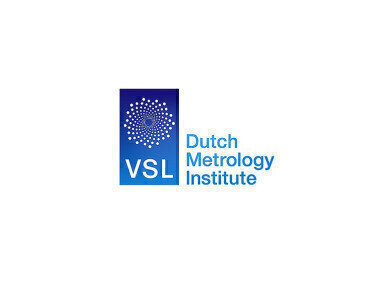Air Monitoring
SI-traceable mercury measurement results with the VSL primary mercury gas standard
Apr 28 2021
A primary mercury gas standard was developed at VSL to establish an SI-traceable reference point for mercury concentrations at emission and background levels in the atmosphere. The primary gas standard has been developed as a mercury gas generator to establish metrological traceability of mercury concentration measurement results, based upon a gravimetric approach, for ambient air levels as well as higher concentrations.
The working principle of the primary mercury vapour generator is based on diffusion according to ISO 6145-8:2005. Specially developed stainless-steel diffusion cells are filled with approximately 2 mL of elemental mercury. The mercury vapour diffuses from the cell through a capillary. To obtain several diffusion ranges, cells with different capillary diameters are used. By weighing the diffusion cells at regular time intervals on a high-resolution analytical balance the mercury mass flow rate (diffusion) is determined gravimetrically.
In the dynamic mercury gas generator, the cells are housed in a diffusion chamber. The diffusion chamber is temperature (20.0 oC ± 0.1 oC) and pressure (105.0 kPa ± 0.1 kPa) controlled, At the bottom a nitrogen flow of 500 mL min-1 enters the diffusion chamber. All of the flow, also enriched by mercury vapour, is then guided to the outlet of the diffusion chamber through an aperture at the top. Mercury concentrations are prepared by mixing the mercury vapours in nitrogen in a second step with flow rates, between 1 L min-1 and 20 L min-1, of matrix gas, e.g., purified air. Using diffusion cells with different capillaries a range of mercury concentrations can be obtained.
Mercury concentration ranges:
- 10 – 500 ng m-3 (under validation)
- 0.1 – 2.1 µg m-3 (U = 3 % (k =2))
- 0.7 – 16 µg m-3 (under validation)
- 5 – 100 µg m-3 (U = 1.8 % (k =2))
Recently published:
The article in Measurement "Primary mercury gas standard for the calibration of mercury measurements" has recently been published. The paper describes the performed characterisation of mercury diffusion cells and primary mercury gas standard. The development of the first primary mercury gas standard shows that metrological traceability to the international standards (SI-units) is possible for mercury concentrations with a lower measurement uncertainty than can be obtained using the most commonly adopted mercury vapour equations. Measurement methods have been developed for the SI traceable calibration of mercury analysers and mercury gas generators which have been used for the comparison between the primary mercury gas standard and current calibration facilities.
The article in Atmospheric Measurement Techniques (AMT) “Comparability of calibration strategies for measuring mercury concentration in gas emission sources and the atmosphere” has just been published. The paper demonstrates the robustness and comparability of the novel primary mercury gas standard, the results of comparisons are presented with current calibration methods maintained at different institutes, using the bell-jar in combination with the Dumarey equation or NIST liquid standard reference material. The results show that the primary standard and the NIST reference material are comparable, whereas a difference of -8 % exists between results traceable to the primary standard and the Dumarey equation.
Future research:
In extension to the comparisons highlighted in the AMT article, future intercomparisons between the VSL primary mercury gas standard and the NIST (National Institute of Standards and Technology in the United States) primary measurement method based on Laser Absorption Spectroscopy are planned.
At the moment metrological traceability for mercury measurements is established at the national metrology institutes. There is no standardised procedure that ensures dissemination of the developed metrological traceability in calibration and testing laboratories and in the field. 1st of October 2020 the “19NRM03 SI-Hg” (Metrology for traceable protocols for elemental and oxidised mercury concentrations) project started. SI-Hg is a three-year project (2020-2023) funded under the European Metrology Programme for Innovation and Research (EMPIR) as a part of Euramet. The goal of the project is the production of metrological traceable protocols for the certification of elemental and oxidised mercury gas generators. Scientifically sound certification protocols in the form of formally accepted documentary standards, are of fundamental importance to guarantee the accuracy and comparability of the mercury measurement results. The certification protocols contribute to establishing a traceability chain from a primary mercury gas standard to measurement data obtained in gas emission sources and in the atmosphere in Europe and globally. Standardisation committee CENTC264/WG8 has already formulated a new work item on the certification protocol to transform the protocols developed in the project into European standards.
The projects 16ENV01 MercOx and 19NRM03 SI-Hg have received funding from the EMPIR programme co-financed by the Participating States and from the European Union's Horizon 2020 research and innovation programme.
Digital Edition
IET 34.2 March 2024
April 2024
Gas Detection - Biogas batch fermentation system for laboratory use with automatic gas analysis in real time Water/Wastewater - Upcycling sensors for sustainable nature management - Prist...
View all digital editions
Events
Apr 22 2024 Hannover, Germany
Apr 22 2024 Marrakech, Morroco
Apr 23 2024 Kuala Lumpur, Malaysia
Apr 23 2024 Kintex, South Korea
Apr 23 2024 Edmonton, AB, Canada


















